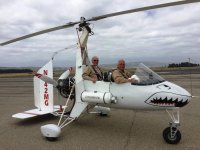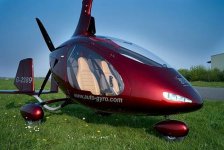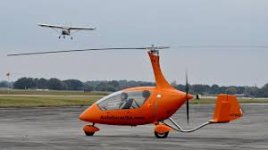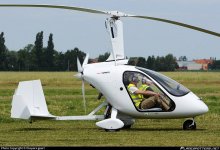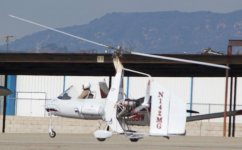This might have enhanced the feeling of being "top heavy".
The slopes I have been mentioning are much more than what you would typically find on a beach. In my experience flying off airport with SC M912 the airstrips with flat surfaces are fine, but everything else bush planes are much better for this use case. In New England, many of the air strips I flew into with my Cub would not be possible for a gyrocopter to take off (I tried many...).
Found a photo of one of the strips I landed where I had a lot of problems sliding down slope trying to take off in the SC M912. Its hard to see the slope angle, but drew some lines. Its much steeper in person than it looks in the photo. What do you think the angle is? 15-20 degrees? The plane is angled to land flat with the surface. Flew into this strip all the time in my Cub and no issue at all, but very challenging in the gyro due to side slope. Actually, I wasn't able to take off where the Cubs took off. I had to go all the way down the hill to a flatter spot next to the tree line to take off, but now didn't have enough runway to clear the tree tops so did 180 just before tree tops.
Also, when I tried to taxi up the slope to park the gryo the gyro fell back on its tail wheel with front nose sticking up in the air. Talk about a pain in the arse. I had to shut down, and figure out how to get out without the gryo rolling down the hill without me in it since needed to hold brakes to keep it from rolling back. The SC M912 didn't have a parking brake lock. I got a whole round of applause once I figured out how to park the gryo on a typical off-airport strip we flew into by my SuperCub friends.

It was comical.
View attachment 1153695
So off airport operations with a gyro is possible, but not ideal for backcountry IMO. Like any aircraft, you have to fly it within its capabilities. Given this I'm still interesting in getting an M22 and modifying it for off airport operations.

BTW - I sold my SC M912 since it was too slow to get to my off-airports spots I enjoyed flying too, and unfortunately was not able to go into many of the strips I flew too... No fun to circle the air strip while all the other bush planes have landed... The tandem gyros are much faster so can address the first issue. I'm out in Colorado now and everything is flat so that addresses the second issue.


